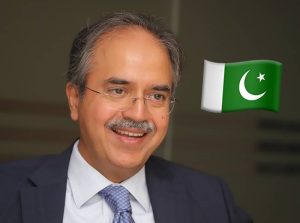Portugal and France: How our neighbors celebrate the Three Wise Men

Lisbon: The image of the Three Wise Men as the “gift-givers” par excellence of Christmas has been part of the cultural heritage in Spain and in most Latin American countries since the 16th century, when the Church decided to replace the aguinaldo (Christmas present), of pagan origin, with the distribution of gifts at Easter of the Three Kings.
In most European countries, Christmas festivities end on January 2, but in Spain the festivities last until January 6 (included) thanks to the Three Wise Men of the East whose jurisdiction has well-defined limits: a mountain range of more than 400 kilometers (the Pyrenees) in the northeast and the five rivers (Miño, Limia, Duero, Tajo and Guadiana) that form the longest border between two countries of the European Union, in the west.
As is well known, the Feast of the Magi coincides with the celebration of the first of the three Epiphany of the Christian liturgical year, which symbolizes the revelation of Jesus to the pagan world, represented by the Magi. The first reference to the Magi from the East is found in the Gospel of St. Matthew, but no number, name or royal office is specified. It was not until the 6th century that the names of Melchior, Gaspar and Balthasar were recorded for the first time in a mosaic in the church of San Apolinar Nuovo, in Ravenna (Italy).
As time went by, and once the initial theological disputes over which should be the most important celebration of Christmas (Birth of Jesus or Epiphany) were overcome, the unification of the two led each country to choose one or the other date as the day par excellence for gifts.
Most countries opted for Christmas Eve, but in Spain, where as in other Catholic countries Epiphany was unified with the feast of the Three Kings, the turning point came in the sixteenth century, when the Church banned the custom of distributing toys or sweets as a gift (a French feudal tradition of pagan origin) and established, in compensation, Easter as a symbol of the victory of the day over the night. From then on, the Kings of the East became inextricably associated with Christmas gifts.
But that only happens in Spain and, by extension, in countries like Venezuela, Argentina, Uruguay, Peru, Dominican Republic or Paraguay. Beyond La Raya (A Raia, the name given to the border between Spain and Portugal) or the Pyrenees, things change a lot.
The Portuguese, our most immediate neighbors, also celebrate the Three Wise Men, but they do so without the most appealing addendum for us: gifts. In Portugal, gifts have always been exchanged on December 24 and the gift-giver in the past was the Baby Jesus himself, although with the passage of time, as in so many parts of the world, the figure of Santa Claus, in this case Pai Natal, took over.
With or without gifts, the Portuguese celebrate the Adoration of the Wise Men with a family dinner on the night of January 5 and a family meal the next day, in which they usually eat cod with potatoes and, for dessert, the Bolo Rei, a kind of Roscón de Reyes (the Spanish bread roll for Wise Men’s Day) very different from the Spanish one both in the ingredients (raisins, dried fruits and candied fruits) and in the ingredients, which are very different from the Spanish one, nuts and candied fruit inside, instead of cream or custard) and in consistency (it is denser and harder) and is also typical of all Christmas and even of other festivities of the year, not only of these dates in particular. Like our Roscón, the Bolo Rei – whose origins are in France and which was introduced in Portugal in the 19th century – used to contain a bean or a small piece of porcelain inside, but the custom was abandoned over the years for fear of choking.
In any case, neither of the two days of Epiphany is a public holiday in Portugal, children do not receive gifts and, except in some towns bordering Spain, there are no Three Wise Men parades either. In fact, the peculiar way in which the Three Wise Men are honored in Spain usually arouses the curiosity of the Portuguese and, year after year, of the country’s TV news.
A very “picturesque” variant of Epiphany in Portugal takes place in Vale de Salgueiro, in the region of Trás-os-Montes (bordering Galicia and Castilla y León), where the festivities begin with the arrival of the piper and end the next day with his departure, and where children go down to the streets to get cigars and smoke in the town square (another usual curiosity of the TV news, which in this case are much less benevolent).
As for the other neighbor, France, although Three Kings Day is not a holiday either, there is no celebration in the streets and, of course, no presents, Epiphany is celebrated in a very French way: eating a lot and eating well.
The French Roscón de Reyes is the Galette de Rois, a flaky almond pastry with a round, flat shape that is browned in the oven, sold in bakeries decorated with a royal crown in golden paper and inside which is inserted a figurine of a king (of greater or lesser quality craftsmanship, depending on the level of the bakery). Whoever finds the figurine becomes the king of the house for the whole day (wearing, obviously, the golden paper crown of the cake) and receives the honor of toasting to everyone’s health and good luck for the whole year. The downside of the prize is that the winner is obligated to invite everyone else to the next cake. So that there is no cheating, tradition dictates that the youngest members of the family must hide under the table while the elders cut the cake to decide, blindly, who gets each slice.
As in Portugal, the traditional gift was a bean, but from the end of the 19th century it became the figure of the king (around the same time, precisely, that the French freed themselves from kings forever). It is said that Louis XIV, as a child, always wanted to be the first to find the surprise to become “king twice”. It is also said that, in 1521, the Count of Saint-Pol met the bean in front of King Francis I himself, whom he had the honor of “dethroning” for a day. The game of thrones ended with a jocular fight with snowballs, eggs and cake between the two, in which the real king got the cake in the face.
As is to be expected in a country as diverse as France, the cake custom has as many variations as there are regions. Unlike the “Parisian” form, in the north, the Galette is usually round and filled with puff pastry, applesauce or jam; in the east, a thick layer of well-sweetened petit chou dough flavored with orange blossom is usually placed on a puff pastry base; In the south, the cake is very similar to the Roscón de Reyes, with its candied fruit included; and in the Lyon region, the typical cake of the Three Kings is the frangipane, made with real quality butter. The only thing that does not vary in any case is the paper royal crown and the surprise, either a bean or a figurine.




